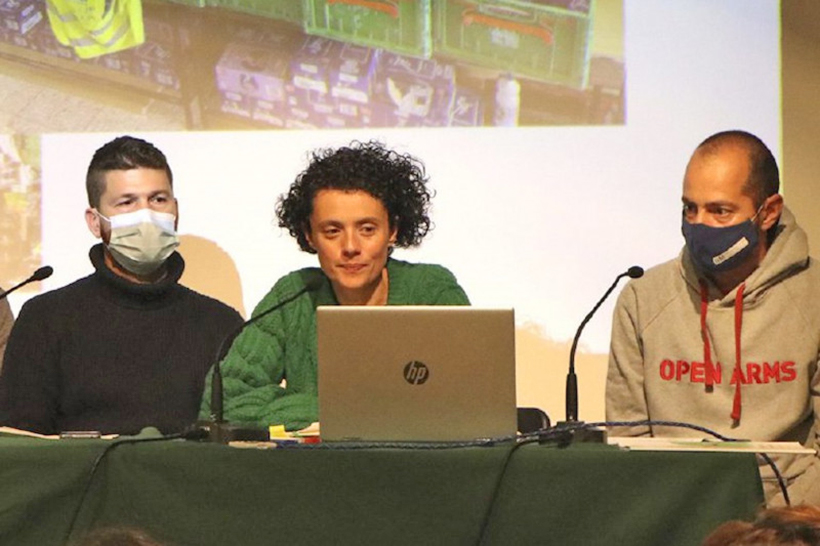Interview with José Luis ‘Kois’ Fernández, Javier Fernández and Nerea Ramírez / Authors of ‘Solidaridades de proximidad’
By Yayo Herrero* in ctxt. Photos by Sara Garchi in “Solidaridades de proximidad”, by the Tangente Co-operative Group.
Some of us believe that the pandemic, especially in its early stages, was a real explosion of solidarity. Many neighbourhood organisations functioned as the nucleus of a self-organised social support network which served to resolve the basic needs of many people.
Three people have researched these networks and systematised their experience. The result of their work is the report Solidaridades de Proximidad. Mutual aid and care in the face of covid 19. This work is, in our opinion, very important, because the dominant discourses tend to pay little attention to those situations and events in which the most humane politics emerge, and yet they wallow in conflict, violence and even contempt for the local, and local initiatives.
The authors of the work are José Luis ‘Kois’ Fernández Casadevante, Javier Fernández Ramos and Nerea Ramírez Piris. We wanted to talk to them.
-The pandemic “forced” us to rediscover the proximity and the community as a relevant sphere for satisfying our needs. Why does this “social infrastructure” become such a determining element in emergency situations?
-Kois: Confinement and mobility restrictions forced us to consider the capacity of our neighbourhoods and municipalities to satisfy our needs (commerce, quality of public space and green areas…), as well as the importance that the people we live with, and who in many cases we do not know, can have, beyond greeting each other cordially on the stairs.
In crisis situations, when the market and public policies fail, the importance of community ties and social relations of proximity emerges. In a disaster situation, it is more likely that your neighbour will knock on your door and worry about your situation, or that a neighbourhood association will manage to set up a soup kitchen, than that a corps of civil servants will come to do it. So, the more a community is structured, the greater the density of associations it has and the more it has a consistent and versatile network of collective facilities (neighbourhood spaces, social centres, schools, health centres…), the better able it will be to deal with disruptive phenomena. During the pandemic, in those neighbourhoods and municipalities where the social infrastructure was denser, citizen responses worked better and had a greater organisational capacity.
–During the pandemic, community action was an essential complement to sustain the lives of tens of thousands of people abandoned by the market and public policies. In the face of future emergencies, it seems pretentious to conceive of a self-sufficient response on the part of institutions, which ignores the importance of actively collaborating with the social fabric. In the face of future crises, what role should public-community cooperation play?
-Javi: Our systems have been designed to be stable over time and to face futures that are a kind of progressive continuity from the present, which is going to be increasingly unthinkable. The situations that await us will not be easily foreseeable, and in the face of this, it is very difficult for public institutions to be fully prepared to face up to their responsibilities, both in terms of the causes and in terms of generating responses and protection for the most vulnerable people. Citizen movements have demonstrated greater agility and capacity for improvisation. They have local knowledge of the neighbourhoods in which they operate, they are aware of informal networks and specific problems, and they can quickly set up local mechanisms… These capacities will be fundamental in the near future.
The resources and responsibility that public institutions have should be matched with the innovative capacity and localised knowledge of citizens’ movements. The challenge is to imagine and activate new alliances between the public and the commons, without blurring the different responsibilities, roles and specificities.
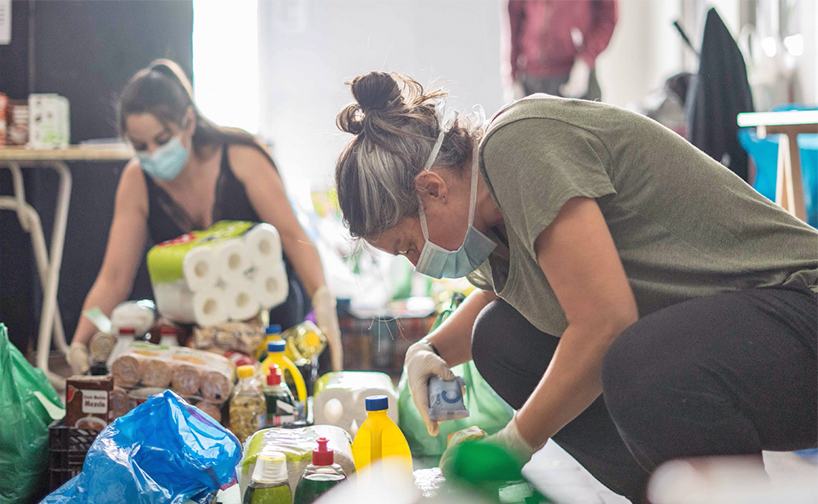
-Kois: Following that thread. Faced with the adverse contexts that lie ahead, no public institution will be able to tackle the major challenges alone, nor does it seem realistic that community movements and fabrics will be able to achieve optimal levels of resilience on their own. Public-community cooperation becomes essential as a form of stable collaboration that maximises the potential for action of the social fabrics. This encounter between community protagonism and proximity public services can occur more easily in the local sphere: schools, health centres, social services, neighbourhood spaces, community gardens…
In short, if a significant part of our problems stem from the alliance of the state with the market, which has led to mercantilisation and privatisation, part of the solutions would come from replacing mutual distrust with a space of encounter and friction, of complicity and creative conflict, between the public and the community.
In your research there is a chapter on what you call micro-solidarities, where you describe the informal dynamics of mutual aid in staircases and buildings. Although they have enjoyed much less visibility, why do you consider them so important?
-Kois: The blocks temporarily became communities that solved problems and met common needs in a very effective way. Their action was decisive and unquantifiable, due to their informality and their hyper-local character or maximum proximity. Beyond solidarity, the staircases adopted collective strategies that took the form of joint shopping, games on balconies and birthday celebrations, lending films and books, exchanging toys, but also recipes and cooked meals, showing gestures of affection… These caring practices, unheard of in many buildings or housing estates, increased interaction and neighbourly trust, improving coexistence and questioning the dominant individualism.
-It seems that all these issues were lived a long time ago. Many people say that the two years of the pandemic are a kind of time hole. Pandemic fatigue, vital acceleration, overlapping catastrophes… It seems as if the unprecedented solidarity movement linked to the neighbourhood networks of mutual aid and care has passed like a shooting star. Do you think it is having trouble integrating as it deserves, in our collective memory?
-Javi: Absolutely. In the face of many traumatic episodes, we have the social temptation to forget, to turn the page towards the promise of returning to a kind of stationary state where conditions seem unchanging. The eco-social crisis shows us that the idea of a stable situation is no more than an illusion. In the face of the various crises we are living through and those yet to come, it is also easy to focus all our attention on the next unprecedented event without connecting the causes of these situations, without having a systemic look.
Not forgetting the enormous movement that has arisen means gathering lessons, broadening reflections, organising thoughts and experiences. It means strengthening learning by anticipation and not playing all the cards of learning by shock.
-Nerea: Yes, the networks, the mutual help, the reflections on the central importance of the most invisible and worst paid jobs, the importance of listening to the birds in a city where all the cars are at a standstill… everything seems to have been almost a dream that hasn’t left a trace because of the desire, as Javi says, to turn the page, to return to “normality”. Being aware of the need to create a collective memory of processes as relevant as these was what moved us to carry out this research.
As the Mujeres de Frente de Quito collective says, uprooting and forgetting are a great strategy of capitalism to weaken us. In part, I believe that the study shows the strengthening that this solidarity movement has meant for diverse associations and collectives, this anchoring in structures that already existed and that work in a network, not being a mere sum of thousands of individual initiatives (which are also essential), makes it somewhat easier for us not to spill out into this forgetfulness.
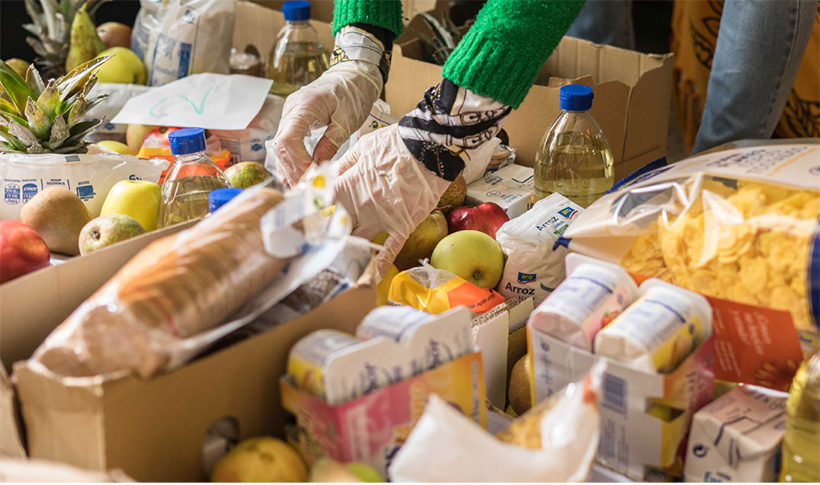
-Neighbourhood networks have stood out for their transversality in incorporating the social diversity of neighbourhoods, despite their biases. Although the leading role played by women and young people in this mobilisation stands out, why do you consider that participation has had these characteristics?
Nerea: In the case of women, as we commented in the report, it seems clear that this type of initiative focused on care and the daily support of existence itself in half-dignified conditions is the space to which we are accustomed or relegated, often also in our militant spaces, and from there it is easy to understand why there have been more women in these support networks. Many people have told us that there were no conflicts in the groups when it came to organising the work because their minds were focused on the urgency and magnitude of the problem. The important thing was to support the lives of many people. I think it is essential to stop and think about this. Who sustains, what sustains us and why we see it clearly in emergency situations and collectively, let alone politically, lose that focus when that urgency is diluted.
-Kois: The involvement of many young people has been another of the features that has attracted the most attention, of those who energised the networks. The possibility of getting out of the house to carry out useful actions, the dynamics of proximity and an activism whose positive effects and social benefits can be seen immediately.
-Neighbourhood networks represent an expanded ethic of care, of people and resources precipitated in the midst of a catastrophe. In opposition, we would find the commission agents, and their necessary accomplices, as the extreme version of the market that seeks to do business in the midst of the drama we were living through. What reflections does this contrast awaken in you?
-Nerea: It makes me angry, to put it mildly. Rebeca Solnit defines the panic of the elites as the behaviour of the economic and political elites in the face of disasters, carrying out control measures based on the fact that people are going to act badly, that they are going to kill each other in the street and take the bread of the people next to them, making it difficult for people to support and organise themselves collectively. Something that scares those who want to maintain the status quo, of course. This would be the extended version of “panic and the elites’ cut”, how to take advantage of any opportunity to remove it and continue dismantling public services. A disgrace.
Javi: Faced with the idea of the “self-made entrepreneur”, we observe again and again how many elites have been built by devouring the public. Once again, we see how the market or economic powers do not save people’s jobs or the economy, but repeatedly gobble up collective resources. In the city of Madrid, many networks that encountered difficulties in their relationship with the current city council have stated that they did not receive specific aid, such as the transfer of premises for their operations, and that they even experienced multiple obstacles in order to maintain their activity. At the same time, the scandal of the commission agents was going on, with several million euros of public money in their pockets…
-Kois: They graphically represent two models of society, and even of the economy. Waste, profit, opacity, dehumanisation, irresponsibility… versus the contrast of humble people donating time and resources, which were carefully cared for it for it to make the maximum common good by precipitating them.
-We have talked about the enormous political power that the networks have had. What limits or difficulties have you seen?
-Nerea: In the study we constructed a final matrix with the elements and lessons learned that we consider necessary to build ecosocial resilience, to be able to overcome and face the crises or emergencies that will come. This clearly shows some of the limits or difficulties that we have encountered and to which we need to give more collective attention. Among them would be the difficulty in generating community plans and processes with institutional involvement and social consensus in advance of crises, or for the necessary citizen management of public facilities and resources. The limited capacity to interconnect in practice the ecological crisis with the rest of the crises and with the emergence of emergencies such as this pandemic would also be one of the clear limits identified.
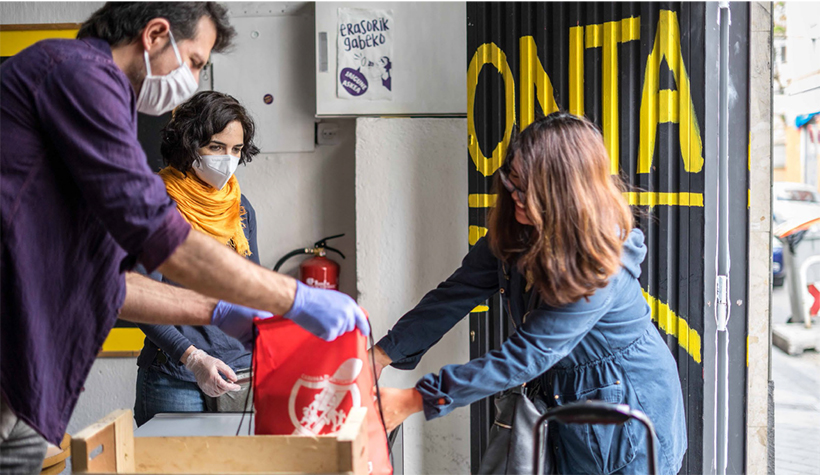
-Javi: At the same time, many networks have focused a great deal of attention on questioning the dynamics of beneficiaries and protagonists. Generating self-managed alternatives to the well-known food banks. From our perspective, this break with the more welfare-based dynamics has enormous transformative power, but it has not been without its many difficulties, limitations and challenges. It meant dedicating a lot of time and effort to group dynamics, incorporating people with little previous relationship with associations into daily tasks, fostering a culture of participation and collective responsibility in people with very different previous experiences, incorporating different forms of collective management… taking on many frustrations.
A pending issue for the vast majority of networks would be to develop internal care roles or explicit spaces to address relational issues and provide emotional support. Something that, in new citizen articulations, is fundamental. Undoubtedly, we need to reinforce the knowledge and skills to work in groups, make decisions together, manage conflicts and internal discomfort, distribute tasks fairly and without losing the feminist perspective, and be able to evaluate our dynamics and functioning. We will not be able to promote a culture of reciprocity based on the relational, and not so much institutionalised solidarity, without paying attention to the group dimension.
-Neighbourhood networks have endowed society with an enormous capacity for resilience. With a view to anticipating future emergency situations that the eco social crisis will bring, what are some of the main lessons we could learn from this episode?
-Kois: An important one would be that we should not believe the anthropological caricature of human beings that neoliberalism has made. By describing them as selfish, competitive and relating to the world in a utilitarian way, always looking for maximum profitability in terms of cost/benefit. In reality, we are much better people than we are portrayed on television. And in exceptional situations, the dynamics of mutual aid are more visible. Networks were able to creatively precipitate a moral economy, which has more to do with cultural values and norms such as empathy, altruism, solidarity and justice, than with monetary calculations or the immediacy of returning favours.
-Javi: Networks have built new and diverse links of proximity, both between people in the same building and between collectives and organisations that previously did not work together. Every link has the potential to drive a political struggle that pushes for transformation. Every link has the potential to re-signify the given situation, to make something different out of what happens to us. In Lewkowicz’s words, a process of “subjectivation”: not just suffering what happens but changing the way in which we relate to it. The networks have configured a process of collective subjectivation, a “we” created from a problem that activates political action. They have not been articulated around a previously defined and subject identity, but have built a commonality, organised around specific objectives. In the face of future critical situations, it will be essential to build these new processes of collective subjectivation, new citizen alliances. We need a proliferation of links.
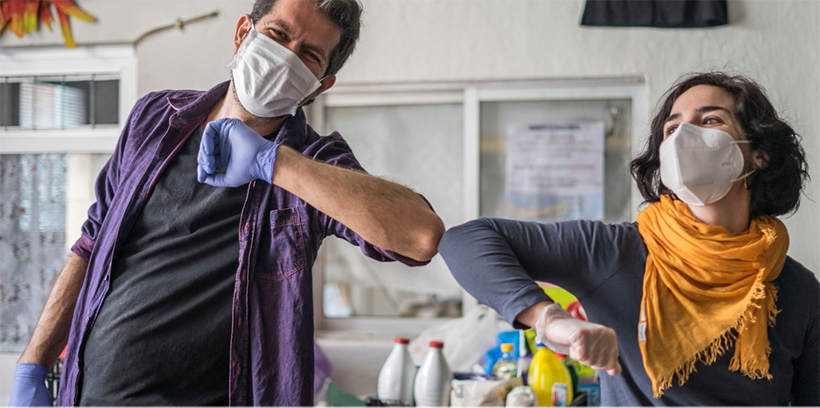
-Rebecca Solnit, the author you mentioned earlier, in her book Paradises in Hell, tells how mutual aid and collaboration in tremendously hard times was lived, paradoxically, from happiness. What feelings have you detected that have remained inside those who organised themselves to make themselves responsible for others?
-Kois: Several people referred to an emotional roller coaster. And I think that’s a very accurate definition, because on the one hand it was a challenge to look precariousness in the eye, to take charge of very complicated life situations with limited resources and to be affected by all that suffering; but on the other hand, there is a kind of “public happiness” in participating in a collective action where empathy, generosity and selfless solidarity prevail. A climate in which unexpected relationships are forged and a unique sense of community belonging is experienced.
The majority of those who were involved in the networks agree that it was a vitally significant experience, a learning experience that marks you and conditions the way you continue to see the world. We inevitably return to our lives, but this event will always be part of them, like a scar that reminds us of what we were capable of to survive painful moments together.
* She is an activist and ecofeminist. Anthropologist, agricultural engineer and graduate in Social Education.


